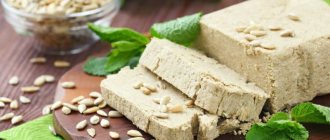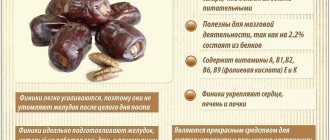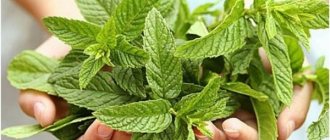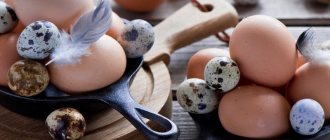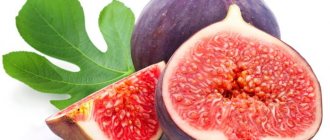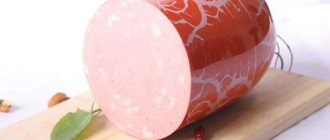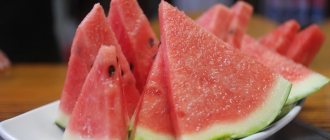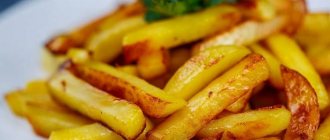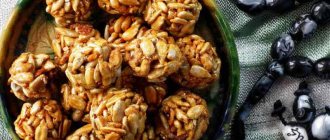Honey is an amazing product that has been used by humanity for thousands of years. Its nutritional and beneficial qualities have long been studied, and its application is widespread. More often it is consumed as an independent dish or a substitute for white sugar, for example, when following a diet. Is it possible for a nursing mother to have honey, because it is healthy. Refusal of any product from the list depends on the individual reaction of the child or mother.
Composition of the product
Honey is a source of “fast” carbohydrates, since it consists of 82% carbohydrates (38% fructose, 31% glucose, 9% other sugars). It also saturates the body with vitamins, antioxidants and minerals.
100 g of raw product contains:
Minerals:
- potassium – 52 mg;
- calcium – 6 mg;
- phosphorus – 4 mg;
- sodium – 4 mg;
- magnesium – 2 mg;
- iron – 0.42 mg;
- zinc – 0.22 mg.
Vitamins:
- ascorbic acid (C) – 0.5 mg;
- niacin (B3) – 0.121 mg;
- pantothenic acid (B5) – 0.068 mg;
- pyridoxine (B6) – 0.024 mg;
- riboflavin (B2) – 0.038 mg;
- folacin (B9) – 2 mcg.
Important!
This product is not recommended for children under three years of age.
It also has medicinal properties and is used for many diseases. It has anti-inflammatory, antimicrobial and antibacterial effects, and is also useful for all human organs and systems, improves immunity, and improves well-being.
Useful properties of honey
The healing properties of the sweet product have been known for many centuries. In ancient Rus', food was prepared from it, treated to guests and served at formal feasts. It is used to prepare sbiten and mead – national Russian drinks. Before the advent of sugar, it was the only sweet food.
Until now, honey is considered both a delicacy and a medicinal product, because it has unique properties. It contains:
- complex of vitamins (A, B, E, C, K, PP, H);
- minerals (potassium, calcium, magnesium, iron, manganese, chromium, phosphorus and others);
- natural sugars (glucose, fructose).
Carbohydrates make up 78% of the total content. Protein is represented by amino acids.
The beneficial characteristics of honey are:
- Vitamins strengthen the walls of blood vessels, participate in blood clotting, the functioning of hormonal glands, and increase the protective properties of the body and immunity.
- Microelements are important for the construction of bone and connective tissue, blood protein synthesis, the functioning of the heart, blood vessels, and brain; they lower blood pressure.
- Natural sugars are sources of energy, mood and are important for the prevention of depression.
Raw honey, pasteurized, heated
Honey collected from an apiary and not subjected to heat treatment is called raw. It is filtered to remove small particles of beebread, honeycomb and other inclusions, and becomes completely suitable for consumption. The natural product completely retains all beneficial qualities and properties, and is used as part of therapy for inflammatory diseases.
Under the influence of the pasteurization process, raw honey gets rid of possible harmful bacteria. During short-term heat treatment, it loses some of its valuable qualities, but becomes completely safe. This product can be found in stores and retail outlets.
Honey is normally liquid, but during storage it becomes sugared. This is a natural process that does not affect quality. Inconvenience arises only during the consumption process. To give it its original appearance, it is heated in a water bath.
Important! It is not recommended to heat it above 60 °C.
Compliance with temperature conditions will allow the product to return to its previous state with minimal loss of beneficial qualities.
Choosing quality honey
In order for it to be beneficial, it is necessary to approach the choice thoroughly, let’s pay attention to the main characteristics.
- A quality product should have a sweet, recognizable taste. The color range of honey can range from light gold to brown. This quality is influenced by the type of plant from which the bees collected pollen, for example, buckwheat has a dark brown color, and linden has a golden color.
- The aroma of the product is also recognizable; it should contain floral notes. It should not contain any foreign odors: chemical, fermentation or smoke.
- Attention should also be paid to transparency. Good honey should be transparent and not contain any unwanted impurities. Small air bubbles and pollen may be included, but they should not affect the appearance.
Can a nursing mother have honey during the first months of lactation?
There are several points of view on the issue of nutrition for a nursing mother.
Western medicine suggests that the mother should not give up her usual food during pregnancy and breastfeeding. The same idea is supported by E.O. Komarovsky. In his programs, he advises not to cut down on your diet, but to avoid only obvious harmful foods. Also, during lactation you should not conduct food experiments. E.O Komarovsky does not prohibit honey during breastfeeding if the mother ate it systematically before and during pregnancy. And the child does not experience a negative reaction, and the daily feeding norm is not exceeded. Consuming honey during lactation will saturate the milk with vitamins and minerals and strengthen the immunity of mother and baby. It is also used in the treatment of inflammatory and viral diseases, and is used as an expectorant. Helps get rid of unpleasant symptoms of colds and bronchopulmonary diseases.
What kind of honey can a nursing mother eat?
There are many types of honey, each with a different taste and aroma. The properties of the species are also slightly different. If you decide to eat honey during breastfeeding, it does not matter which variety you choose, it is important that it is a natural product.
Buckwheat
The buckwheat look is not the most beautiful. It is resinous black, the consistency of the product is heterogeneous. Buckwheat honey has a tart aroma and crystallizes quickly. This product is considered the most useful, it contains the largest amount of valuable substances. It contains a lot of iron, so the product has a beneficial effect on blood composition. In addition, it has a good effect on the cardiovascular system, helps with stress, depression, etc.
Donnikovy
Sweet clover honey in its pure form is rare, since sweet clover blooms for a long time, and during this time bees collect a lot of nectar from other flowers. This type of honey is known for being less sweet than others, as its sweetener is primarily fructose rather than sucrose or glucose. The product has many beneficial properties, but the most famous are its effects on the gastrointestinal tract, bladder and liver.
Chestnut
Few people choose this type of honey because of its characteristic bitterness and not at all sweet taste. However, it is a very useful product. There are wild and seed chestnuts, depending on which plant the nectar is collected from, the honey can be white or very dark. Light is considered more useful. This product is known for its antibacterial properties. It works well in the fight against viruses and bacteria, and is actively used for colds. Chestnut honey is good for coughs, promotes wound healing, etc.
Chestnut honey is not sweet, but it is good for colds and for increasing the body's resistance to viruses.
Acacia honey
Acacia honey is harvested in May. Its color depends on the variety of acacia from which the bees collected nectar: from almost white to bright yellow. It is moderately sweet, but not bitter. Its most famous quality is its rich aroma. Fructose predominates in the product, in addition, it is the least allergenic variety. It is believed that this variety contains the largest amount of vitamins and minerals.
Fireweed
This type of honey is one of the healthiest. It is used to treat many diseases. It looks light yellow, but may have a greenish tint. It crystallizes quickly. The structure of honey is heterogeneous. Due to these factors, many people are afraid to buy this type of honey.
In the honeycomb
Honey in combs is the safest from the point of view of possible counterfeiting. You can be sure that this is a natural product. In addition to the beneficial properties of honey, the product is distinguished by the following valuable components: beebread, pollen, wax, propolis and tartar. Eating honey in this form is beneficial for the condition of the oral cavity and teeth. If you regularly chew honeycombs with honey, you can slightly whiten your tooth enamel. Honeycombs ensure the sterility of the product; it is free of bacteria and other pathogenic microorganisms.
Lime
This is the most popular variety of product. It has a pleasant aroma. Some people note notes of mint in it. This honey can be creamy white or golden in color. It has a good effect on the immune system, helps cope with infectious diseases, and has an antipyretic, antibacterial, and anti-inflammatory effect.
Linden honey is most popular among nursing women due to its taste and aroma.
Possible negative consequences
Considering all the positive qualities of the product, do not forget that it can be a source of negative reactions.
The most common is food allergy, expressed in skin manifestations, sneezing, runny nose, and watery eyes. If a mother, having tried honey, observes corresponding symptoms of the disease in her baby, then she should abandon the product for now. After some time, you can try it again. Attention! Often the source of an allergy may not be honey, but the protein component it contains.
The risk of developing an allergic reaction exists for people of any age, and it is especially common in children. Therefore, if a mother doubts whether honey can be used while breastfeeding, she should adhere to the general rules for introducing a new product in the first months.
Possible harm from tea with honey during lactation and precautions
Now let's look at the properties of this drink, because of which some people classify it as prohibited during breastfeeding.
- Tea with honey can cause allergies in both mother and baby. Although a very small amount of a substance from the mother’s food enters the child’s body through milk, this amount is enough to cause a negative reaction. It usually results in patches on the skin, difficulty breathing, watery eyes, coughing and digestive problems.
- Not everyone knows, but unpasteurized honey may contain spores of bacteria that cause botulism. Usually the digestive and immune systems of an adult can cope with such spores, but if they are weakened, this can lead to serious consequences. This is not dangerous for the child - the bacteria are too large to enter the bloodstream. However, it is recommended to give the child honey or tea with it no earlier than a year after birth.
- Tea with honey is quite high in calories, and therefore can lead to an uncontrolled increase in excess weight in the mother. That is why moderation should be observed when consuming it.
- Also, drinking too much of this tea can lead to sleep problems, since the tea contains caffeine. There is especially a lot of this substance in green tea.
- The sugars contained in honey are excellent food for bacteria, and therefore can cause caries in the mouth.
How and when to try
Despite nutritional advice for nursing mothers and nutritional value, honey should be introduced into the diet with caution and gradually.
You need to start with a few drops, gradually increasing the portion to a teaspoon per day. If the child does not experience any negative reactions, then the volume can be increased without exceeding the daily norm. A young mother must independently assess the possible risks and determine from how many months breastfeeding can begin. But before introducing a new product, it is necessary to obtain a recommendation from a doctor or lactation consultant.
Is it possible to eat honey during breastfeeding?
Honey is a valuable product with a wonderful composition. It is used in folk treatments for many diseases. Despite all the benefits, the use of honey in the diet of a nursing mother is very limited. This is because it contains substances that can cause a severe allergic reaction not only in the mother, but also in the child. This does not mean that sweets are prohibited. It is important to adhere to all the rules of use and introduction into the diet, then you will receive all the beneficial substances while minimizing the risks.
Honey should be introduced into the diet of a nursing mother very carefully, since there is a high probability that the baby will develop an allergy to the components.
In the first month after birth
In the first month after birth, the baby’s gastrointestinal tract gets used to the new type of nutrition. To easily adapt the baby to the external environment, it is recommended to minimize the risk. During this period, you should not eat allergens or foods that can cause digestive problems. Honey, as a strong allergen, is prohibited from being eaten in the first month.
When can honey be introduced into the diet of a nursing mother and how to do it correctly?
If you're looking for a sweet option while breastfeeding, honey is not your option. Since it is a strong allergen, it is best to fully introduce it into the diet after six months. But, in general, the introduction of honey into the diet of a nursing mother is allowed at 2–3 months . It is recommended that a nursing woman try honey on the tip of a teaspoon for the first time. An allergic reaction or other problems usually appear within 1-2 days, but it is best to monitor your baby for about a week. The amount of product cannot be increased until six months. You can eat treats during this period no more than 2-3 times a week.
After six months, you are allowed to gradually increase the dosage to a teaspoon and eat it more often.
| Baby's age | How much can you eat |
| 1 month | Forbidden. |
| 2 months | Not recommended. |
| 3 months | On the tip of a teaspoon several times a week. |
| 4 months | On the tip of a teaspoon several times a week. |
| 5 months | On the tip of a teaspoon several times a week. |
| 6 months | 1 teaspoon several times a week. |
The benefits of honey during breastfeeding
Honey has been known for its beneficial properties for a long time. It is used for treatment, in cooking or as a delicacy. The benefits of honey are confirmed by scientific research. It contains B vitamins, vitamins A, C, K and others. In addition, the product is rich in minerals: iron, potassium, manganese, chromium. Honey contains lactose, pectin, fructose and organic acids. The valuable components of sweetness are well absorbed by the body, so the product is known for the following properties:
- improving the taste of breast milk, honey makes it sweet;
- increasing the quantity and nutritional value of milk;
- replenishment of vitamins and minerals in the body of a nursing woman, depleted by pregnancy and childbirth;
- calming effect on mother and baby;
- normalization of the nervous system;
- help for depression;
- improved sleep;
- increased metabolism;
- normalization of blood sugar;
- prevention of thrombosis;
- normalization of hormonal levels;
- improving the functioning of the reproductive system;
- increasing endurance and performance;
- improvement of blood clotting;
- improving the condition of bones and teeth;
- cholesterol reduction;
- improving the functioning of the cardiovascular system;
- normalization of digestion;
- help with constipation, etc.
Healthy recipes
During lactation, the mother needs to take care of her health and the well-being of the baby. To strengthen your immune system, you can prepare healthy drinks with honey. By correctly calculating the energy value, you can prepare dishes that are healthy for your figure.
| Name | Calorie content of the drink, including a teaspoon of honey, 100 g |
| Rosehip decoction with honey | 50 kcal |
| Honey-apple drink | 52 kcal |
| Milk with honey | 32 kcal |
| Tea with honey | 79 kcal |
Important! It is necessary to make sure that there are no allergies to other components of the drinks.
Rosehip decoction with honey
The combination of these products has a beneficial effect on the immune system and enriches it with vitamin C.
To prepare the drink you will need:
- 100 g rose hips;
- a tablespoon of honey;
- 1.5 liters of water.
The berries must be washed and crushed. Pour water into an enamel bowl and boil. Next, add rose hips, cover with a lid and cook for 8-10 minutes. Then leave for several hours. Strain the drink through a sieve, add the remaining ingredient.
Honey-apple drink
You can add flavor and vitamins to a simple apple compote by preparing it according to a new recipe. To prepare the drink you will need:
- 3-4 green apples;
- 2 tbsp. spoons of flower honey;
- 1.5 liters of water.
Chop the apples and add to boiling water. Cook with the lid closed for 3-5 minutes. Add honey to the cooled drink.
Tea with honey
This successful combination of products allows a young mother to monitor her health every day without any additional conditions. In order to get more benefits, you can use herbal teas instead of black and green teas.
Making the drink is not at all difficult. It is necessary to brew tea in the usual way, cool to 50-60 ° C and add a spoonful of sweet product.
Milk with honey
A common folk remedy for relieving symptoms during colds is warm milk with honey. This drink has a softening, warming agent that stimulates the body's immune functions.
When preparing drinks, it is important to observe the temperature regime, heating the milk no higher than 60 °C.
Honey baked goods
During the period of breastfeeding, a nursing mother can diversify her diet with flour sweets. The simplest recipe can be a sponge cake.
Important! It is necessary to ensure that there is no allergic reaction to the components of the recipe.
To prepare you will need:
- chicken eggs 3 pcs.;
- whole grain flour – 300 g;
- honey – 4 tbsp;
- baking powder – 1 tsp.
Beat the eggs with a mixer until the mass doubles. Then carefully add honey and stir until dissolved. In a separate bowl, sift flour with baking powder. Mix all ingredients with a spatula.
Bake for 35-40 minutes at 180°C.
External use
Due to its properties, honey is also used as an external remedy. It is known for wound healing and local warming properties. For a nursing mother, it can be used for stagnation of milk, as a folk remedy.
Honey cakes for lactostasis
During the lactation period, many mothers encounter such an unpleasant phenomenon. A compress of honey cakes is used as part of the therapy. To do this, you need to use a candied product. You need to roll a ball out of honey and knead it into a flat cake and apply it to the problem area for several hours.
Cabbage leaf with honey
To improve the result, you can use cabbage leaves as an adjuvant. It will help relieve swelling. Before applying it, you need to knead it to release some juice. Then you need to put a honey cake inside the sheet. Leave the compress on the sore breast for several hours and continue feeding as usual.
The listed measures, together with other manipulations to prevent lactostasis, will help cope with the disease.
During lactation, it is necessary to take into account the needs of the baby, but also not to forget about the needs of the young mother. Therefore, it is necessary to correctly create a menu that takes into account the interests of everyone.
